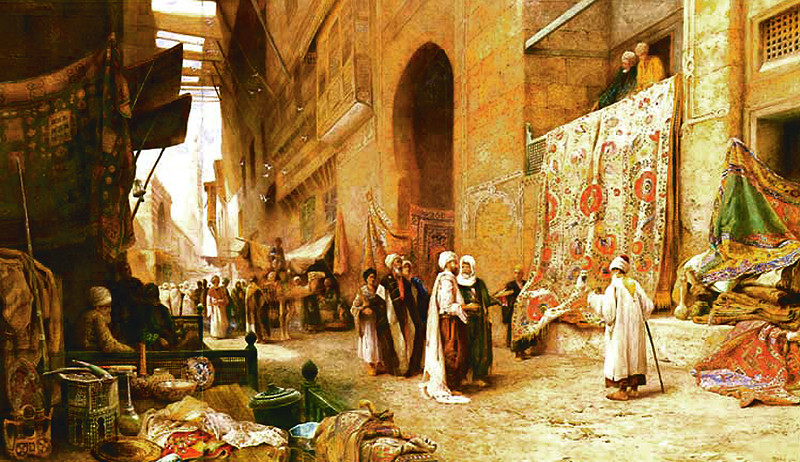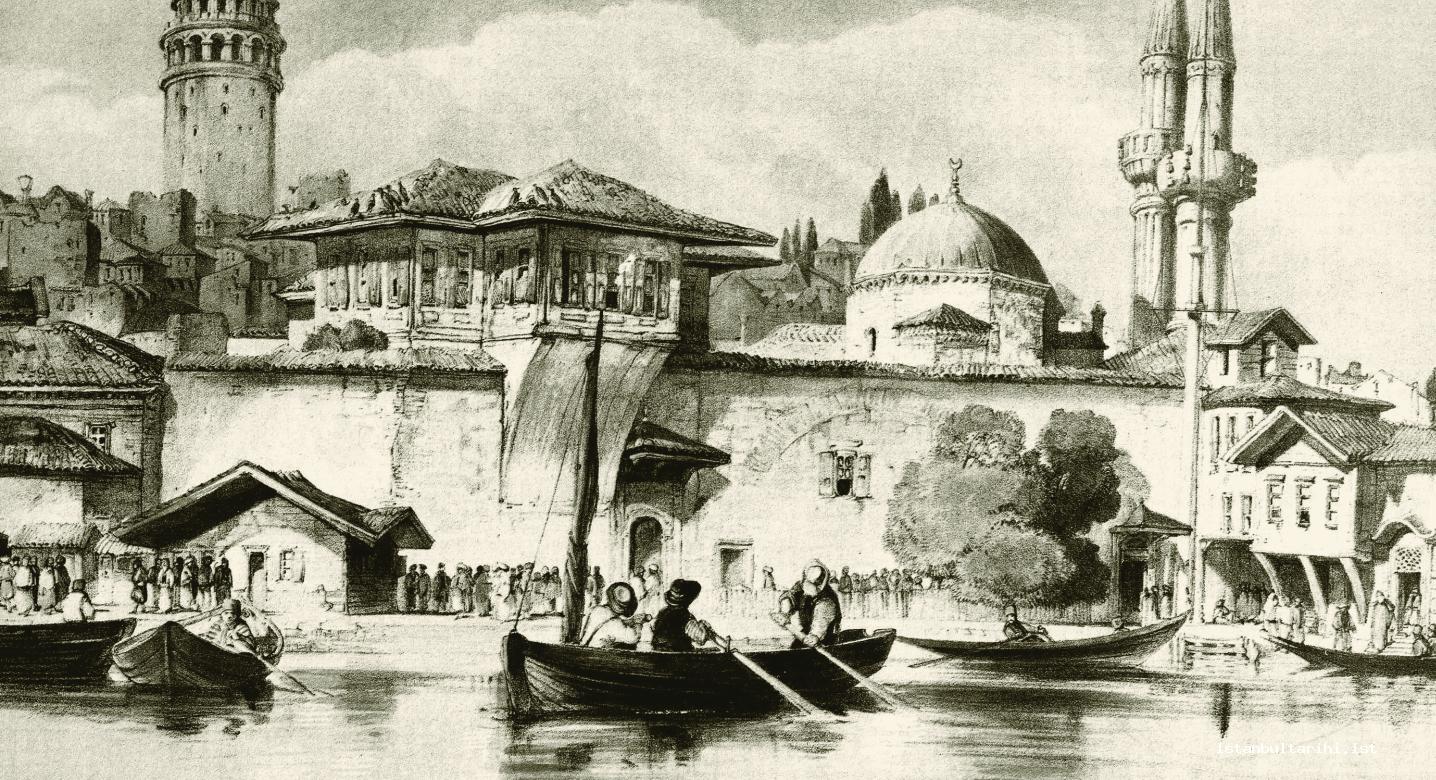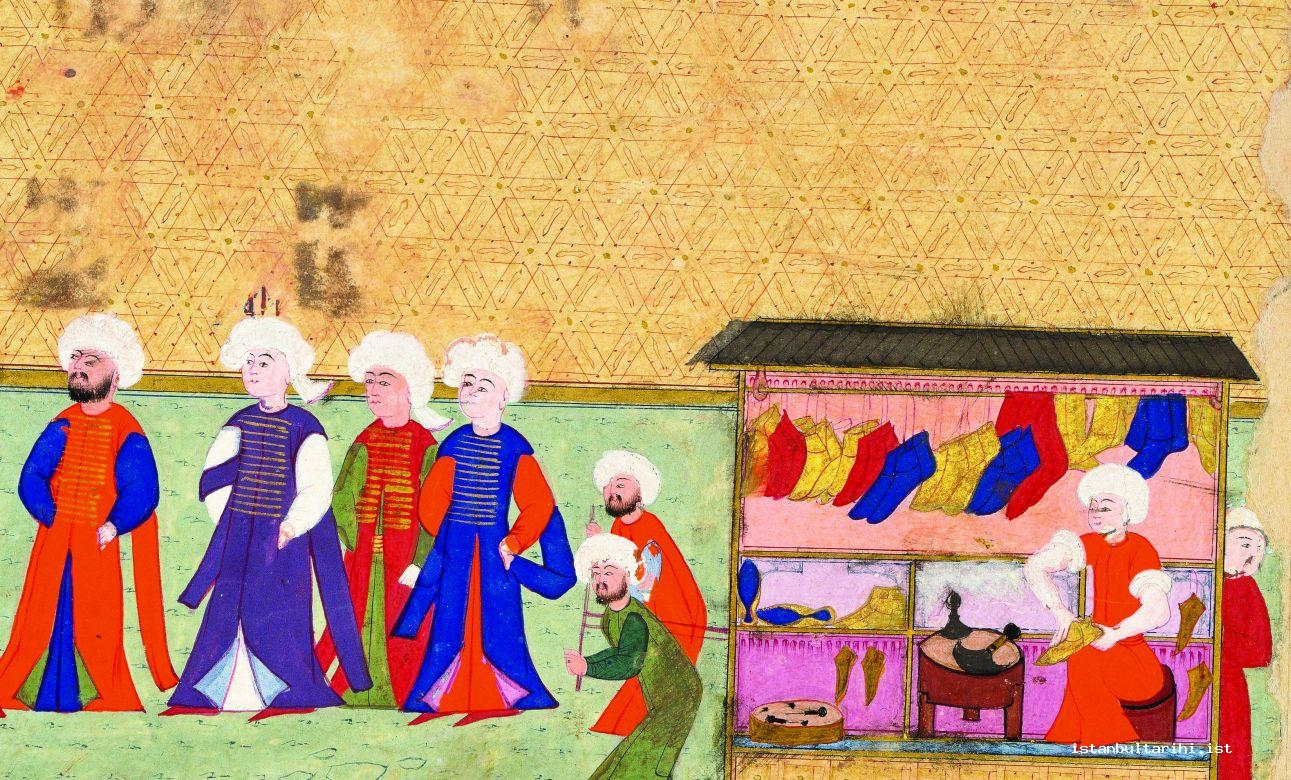Explore the economic foundations of the Ottoman Empire, its trade systems, agricultural roles, taxation policies, and lasting impacts on modern economies.The Economic Structure of the Ottoman Empire was a complex and intricate system that laid the groundwork for one of history's most influential empires. This article delves into the foundations of Ottoman economic life, examining its trade systems, taxation policies, and the pivotal role geography played in shaping economic activities. From the thriving agricultural sector to the bustling trade routes that connected continents, the Ottoman Empire's economic landscape was marked by innovation and adaptation. We will explore the key features that fostered economic growth, the significance of guilds, and the effects of foreign trade on prosperity. Additionally, we will address the challenges faced during periods of decline and the lasting impacts of this economic structure on contemporary economies. Join us as we uncover the layers of an empire that crafted a legacy of economic influence that endures to this day.
Foundations of The Economic Structure in the Ottoman Empire
The economic structure of the Ottoman Empire was intricately woven with various historical, cultural, and social influences, which laid the groundwork for its long-lasting prosperity. A few of the fundamental aspects that contributed to The Economic framework of the empire include its administrative organization, resource management, and social classes.
At the heart of the Ottoman economic structure was the millet system, which allowed diverse religious and ethnic communities to govern themselves according to their laws. This created a stable environment that facilitated trade and cooperation among various groups. Each millet had the autonomy to conduct its own economic activities, thus promoting a sense of responsibility and contributing to the overall economic vitality of the empire.
Another crucial element was the land tenure system. The Ottomans employed a feudal-like system where agricultural lands were typically granted to soldiers or loyal subjects in exchange for military service or loyalty to the Sultan. This not only ensured a steady supply of food but also tied economic output directly to military strength, thus enhancing the security and economic stability of the empire.
The centralization of the state under a strong Sultanate allowed for strategic planning in managing resources and the economy. The establishment of a robust bureaucracy facilitated tax collection and the regulation of trade, ultimately leading to a structured economic environment. These administrative frameworks provided the necessary support for the entrepreneurial activities of the citizens, encouraging innovations in trade and production.
Furthermore, trade policies, including the regulation of markets and standardization of weights and measures, ensured a fair and productive trading environment. The promotion of guilds also fostered craftsmanship and skilled labor, laying the foundation for a diversified economy that was resilient to fluctuations. The combination of these elements resulted in a thriving economic landscape within the Ottoman Empire.
As we delve deeper into the complex layers of Ottoman economics, understanding these foundational elements will provide essential insights into how they influenced other facets of the empire, such as trade systems and taxation policies.

Key Features of Ottoman Trade Systems and Their Development
The economic prosperity of the Ottoman Empire was largely attributed to its sophisticated trade systems, which evolved significantly over the centuries. These systems were characterized by several key features that not only facilitated commerce but also integrated the vast territories under Ottoman rule.
One major feature was the empire's strategic geographical position, which connected Europe, Asia, and Africa. This advantageous location transformed the empire into a central hub for trade. Merchants actively engaged in the exchange of goods such as spices, textiles, and precious metals, leveraging the The Economic benefits derived from its trade networks.
| Trade Goods | Regions of Origin | Key Ottoman Trade Centers |
|---|---|---|
| Spices | India, Southeast Asia | Istanbul, Edirne |
| Textiles | Egypt, Persia | Aleppo, Bursa |
| Precious Metals | Africa, Europe | Istanbul, Salonika |
Furthermore, the establishment of a comprehensive legal framework regulated trade practices and protected merchants. The Ottoman legal system created a sense of security in commercial transactions through the implementation of fair trade laws, contracts, and dispute resolution mechanisms.
Another significant attribute was the role of the The Economic guilds, which organized craftsmen and traders into associations. These guilds not only controlled production standards but also fostered fair competition among artisans, ensuring the quality of goods and services available in markets.
The development of trade routes, including the famed Silk Road and Spice Route, played a pivotal role in enhancing trade volume. The Ottoman's control over these routes not only increased their wealth but also established the empire as a crucial player in global commerce.
In summary, the key features of Ottoman trade systems and their progressive development reflect the integral role that trade played in shaping the The Economic landscape of the empire. This intricate network of commerce ultimately contributed to the longevity and prosperity of the Ottoman Empire, leaving a lasting legacy on subsequent economic structures in the region.
Impact of Geography on The Economic Activities in the Empire
Geography played a crucial role in shaping the economic activities of the Ottoman Empire. The empire's vast expanse, which spanned three continents—Europe, Asia, and Africa—provided access to diverse resources and markets.
The strategic location of the empire facilitated the development of major trade routes that connected the East and West. This geographical advantage allowed for the exchange of goods such as spices, textiles, and precious metals, significantly contributing to The Economic prosperity of the empire.
Furthermore, the empire's varied landscapes, including fertile plains and navigable rivers, supported agriculture, which was the backbone of the empire's economy. Regions such as Anatolia and the Balkans became the agricultural heartland, producing essential crops that sustained the population and supplied markets.
The empire also benefited from the presence of coastal areas that boosted maritime trade. The Mediterranean Sea and the Black Sea enabled access to international markets, enhancing trade networks and encouraging the influx of goods and cultural exchanges.
However, geography also posed challenges. The vast size of the empire made communication and transportation of goods difficult, leading to regional disparities in wealth and economic development. Additionally, the mountainous terrains in certain areas hindered agricultural productivity and trade.
In summary, the geographical features of the Ottoman Empire significantly influenced its economic activities. The benefits of fertile lands and strategic trade routes, coupled with the challenges posed by uneven terrain, collectively shaped the empire’s economic structure and contributed to its historical prosperity.

Role of Agriculture in The Economic Stability of the Empire
Agriculture played a pivotal role in the economic structure of the Ottoman Empire, serving as the backbone of its economy and contributing significantly to the overall prosperity of the state. As one of the primary sectors, agriculture not only provided sustenance for the population but also supported trade and industry, highlighting its integral position within the empire's economic framework.
The vast and fertile lands of the empire facilitated the cultivation of diverse crops, including grains, fruits, and vegetables. Wheat, barley, and rice were staples that ensured food security and formed the basis of the Ottoman diet. This agricultural abundance allowed the empire to maintain a stable food supply, which was essential for the health and productivity of its urban populations, further fueling the The Economic activities in cities and trade hubs.
Moreover, the Ottoman agricultural system was characterized by the use of land-tenure systems, such as the timar system, which allowed for efficient land management and productivity. In this system, land was granted to military officers and officials in exchange for their service, ensuring that the land was cultivated effectively while also providing them with income. This not only strengthened the military but also guaranteed that agriculture thrived as a vital source of revenue for the state.
The economic stability offered by agriculture extended beyond food production. The surplus from agricultural yields facilitated the growth of local and regional markets, contributing to the development of trade networks. Goods produced from agriculture were often exchanged for various manufactured items, thereby enhancing commercial interactions and generating wealth within the empire.
Furthermore, agriculture also played a significant role in taxation. The Ottoman state relied on agricultural taxes, such as the tithes or the 'aşar,' which were essential for generating public revenue. These taxes funded various government expenditures and military campaigns, thus reinforcing the The Economic framework that sustained the empire through various phases of its history.
In conclusion, the role of agriculture in the economic stability of the Ottoman Empire cannot be overstated. It not only laid the foundation for food security and trade but also contributed to the political and military strength of the empire, establishing a comprehensive agricultural system that supported the broader economic activities across the region.
Taxation Policies: Input for Revenue Generation and Control
The taxation policies of the Ottoman Empire were integral to its economic structure, supporting the state's substantial administrative machinery and military expenditures. These policies were formulated to ensure a steady flow of revenue, which was crucial for maintaining the empire's grandeur and stability. The Ottoman tax system can be understood through its various components and their respective impacts on the economy.
One of the most significant aspects of Ottoman taxation was the land tax, known as the tithe (öşür). This tax was levied on agricultural produce, compelling farmers to pay a portion of their harvest, typically one-tenth. The reliance on agriculture made this form of taxation a primary revenue generator for the empire, highlighting the vital relationship between agricultural productivity and the state’s financial health.
In addition to land taxes, the Ottomans implemented various other taxes such as the poll tax (cizye), which was imposed on non-Muslim subjects as a form of protection and acknowledgment of their status within the empire. This levy was not only a source of income but also served to reinforce the hierarchical social structure of the empire, where different groups were subjected to distinct economic obligations.
The tax collection system relied heavily on local officials, known as timar holders, who were responsible for collecting taxes in their designated regions. This decentralized approach allowed for more effective tax collection and greater local governance, but it also resulted in disparities, with some regions facing heavier tax burdens than others. Corruption at various levels often affected the efficiency and fairness of tax collection.
Moreover, the Ottoman Empire established a series of exemptions and privileges for certain groups, such as religious institutions and elite classes. These exemptions frequently complicated the taxation landscape, creating tensions between different societal segments and impacting overall revenue generation.
The strategic distribution of taxes and allowance for remission during times of hardship indicated an adaptive economic policy aimed at sustaining the populace and mitigating social unrest. In moments of crisis, the Ottomans could reduce tax demands to ease the burden on farmers and merchants, which in turn fostered loyalty and cooperation among the subjects.
In conclusion, the taxation policies in the Ottoman Empire had profound implications for its economic structure. They served not only as mechanisms for revenue generation but also played a crucial role in controlling economic activities, influencing social relations, and ultimately shaping the empire's long-term stability and prosperity.

Development of Guilds and Their Economic Significance
The emergence of guilds within the Ottoman Empire played a crucial role in shaping The Economic landscape of the period. These organizations, which were formed by craftsmen and merchants, served not only as a means of controlling trade and production but also as a mechanism for fostering social cohesion among artisans.
Guilds established a regulatory framework by setting standards for quality, prices, and working conditions, which significantly contributed to the economic stability of the Empire. By regulating entry into trades and providing training to apprentices, guilds ensured that skilled labor was continuously available, thus supporting the empire's vast array of industries.
Moreover, guilds acted as a buffer against external economic pressures. They effectively represented the interests of their members in dealings with the government, negotiating fair taxation practices and lobbying for favorable trade conditions. This sense of collective power enabled artisans to enjoy a degree of economic security that would have been difficult to achieve individually.
The social fabric of the Ottoman Empire was further enriched by guilds as they often served religious and charitable functions in addition to their economic roles. Many guilds were closely tied to Sufi orders, thereby intertwining economic activity with spiritual life. This connection not only reinforced consumer loyalty to local artisans but also facilitated the distribution of resources within communities.
In summary, the development of guilds was significant for The Economic structure of the Ottoman Empire. They not only fostered skilled labor and economic resilience but also nurtured community ties, illustrating the multifaceted impact that these organizations had on the empire’s prosperity and stability.

Foreign Trade's Influence on The Economic Prosperity
The Ottoman Empire's strategic location at the crossroads of Europe, Asia, and Africa allowed it to become a significant player in international trade, profoundly influencing The Economic landscape of the region. Foreign trade not only facilitated the exchange of goods but also served as a vehicle for cultural and technological exchange, bolstering the empire's economic prosperity.
Trade during the Ottoman period focused on various key commodities, including silk, spices, precious metals, and textiles. The empire's extensive network of trade routes enabled merchants to engage in long-distance commerce, connecting the East with the West. This situation was exemplified by the famous Silk Road that traversed Ottoman territories, which became central to the transcontinental flow of goods.
Moreover, the Ottoman Empire's relationships with European powers, particularly during the Renaissance, marked significant milestones in economic growth. The demand for luxury goods from the empire led to increased trade activities, enhancing the empire’s wealth. The Ottomans capitalized on this demand by establishing trade agreements that not only promoted the export of their goods but also encouraged the influx of foreign investments.
Additionally, the influx of trade taxes and tariffs from these transactions contributed to the empire's revenue, facilitating public spending on infrastructure, military, and social services. The increase in trade activity also fostered the development of urban centers, which became thriving marketplaces, thereby spurring economic development at the local level.
In summary, foreign trade was a cornerstone of the Ottoman Empire's economic structure. It played a crucial role in elevating The Economic status of the empire while also influencing its sociocultural dynamics through the exchange of ideas and customs, ultimately contributing to its long-term prosperity.
The Economic Challenges Faced During Declining Eras
The economic fabric of the Ottoman Empire faced significant challenges during its declining eras, stemming from a combination of internal and external factors. These challenges significantly impacted The Economic stability and growth of the realm.
One of the primary challenges was the increasing competition from European powers. The advent of new trade routes and the rise of maritime trade diminished the significance of traditional overland Silk Road routes, which had historically bolstered the empire's trade revenues. As European states expanded their own global empires, they strategically outmaneuvered the Ottomans, causing a notable shift in trade dynamics.
Additionally, internal strife, including corruption within the administration and conflicts among the ruling elite, weakened the economic structure from within. This corruption led to inefficient tax collection and misallocation of resources, resulting in diminishing returns from agriculture and trade.
The empire’s overreliance on agrarian economies also posed challenges. As agricultural productivity began to decline due to neglect and unsustainable practices, the once-booming rural economy suffered, triggering a ripple effect that destabilized urban markets reliant on agricultural output.
Moreover, inflation and monetary instability plagued the empire, fueled by excessive minting of currency to fund military campaigns. This devaluation of currency reduced the buying power of citizens and increased the cost of imports, further exacerbating economic struggles.
Lastly, the Empire's efforts to modernize its economy and adopt Western policies were met with resistance. The traditional guilds, which were essential for maintaining local economies and craftsmanship, found it difficult to adapt to new industrial practices. This resulted in a stagnation of economic growth and a decline in overall productivity.
In summary, the economic challenges faced during the declining eras of the Ottoman Empire were multifaceted, involving international competition, internal corruption, agricultural decline, inflationary pressures, and resistance to modernization efforts. Understanding these challenges provides crucial insights into how they influenced the long-term trajectory of The Economic landscape of the region and its historical significance.
Frequently Asked Questions
What were the key foundations of the Ottoman Empire's economy?
The key foundations of the Ottoman Empire's economy included agriculture, trade, and a centralized taxation system, supported by innovations in infrastructure and a reliance on both local and international markets.
How did agriculture contribute to the Ottoman economy?
Agriculture was the backbone of the Ottoman economy, providing food and raw materials. Farmers cultivated various crops and engaged in livestock rearing, which ensured sustenance and trade.
What role did trade play in the Ottoman Empire?
Trade played a crucial role in the Ottoman Empire by facilitating the exchange of goods between Europe, Asia, and Africa. The empire's strategic location along important trade routes helped it to thrive economically.
What were some significant trade products in the Ottoman Empire?
Significant trade products included silk, spices, textiles, and agricultural products like grains and fruits. The empire was also known for its intricate carpets and ceramics.
How was taxation implemented in the Ottoman Empire?
Taxation in the Ottoman Empire was implemented through a comprehensive system that included land taxes, poll taxes, and trade tariffs, collected by local officials and used to fund state expenditures.
What were the economic impacts of the millet system?
The millet system allowed various religious communities to govern themselves and manage their economic activities, fostering local commerce and contributing to overall economic stability within the empire.
What changes occurred in the Ottoman economy during the 19th century?
In the 19th century, the Ottoman economy faced modernization challenges, transitioning towards industrialization and facing competition from European powers, leading to significant economic reforms and reorganization.

